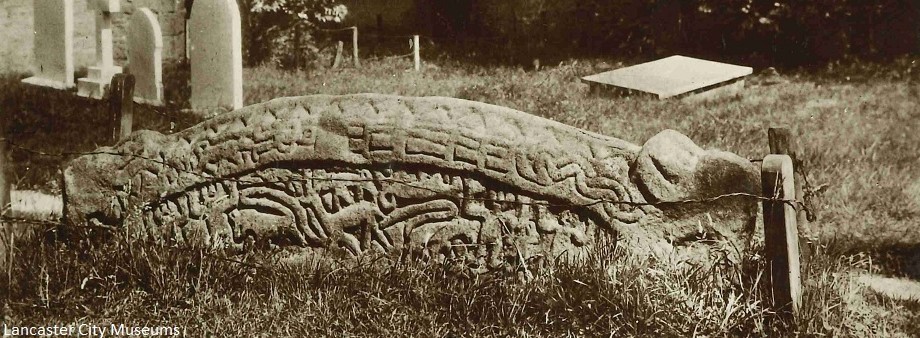Heysham is recorded in the Domesday Book as ‘Hessam’. The first part is the Old English ‘hæs’ meaning ‘brushwood’ or ‘underwood’. It was often used in relation to swine pastures – a valuable resource in the village economy.
The second part comes from the Old English ‘ham’ which should be pronounced with a long ‘a’. This word didn’t need to change much to become our ‘home’ and also part of ‘hamlet’. It was used early on in the Anglo-Saxon era and it has been suggested that in Lancashire it often denotes an early settlement connected with the church.
Heysham was a very significant place. It has a range of early medieval religious stonework dating back possibly to the late 600s. It also appears to be a ‘double minster’ site and St Patrick’s chapel boasted some high-status wall plaster with writing (in Latin) on it.
Like Halton, Heysham parish was unusual in Lancashire as it had no other village townships within it. It was also independent of the large powerful Lancaster parish, although the Prior of Lancaster was granted the Lower Heysham part of the manor.
The lord of Upper Heysham had special duties when the lord of Lancaster entered the county. He had to meet him at the boundary with horn and staff and accompany him until he left the county again.
The photo shows the Viking-Age Hogback when it was in the churchyard.


